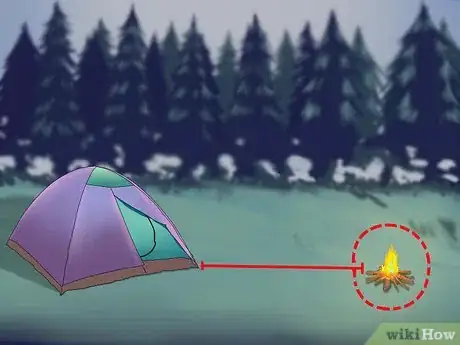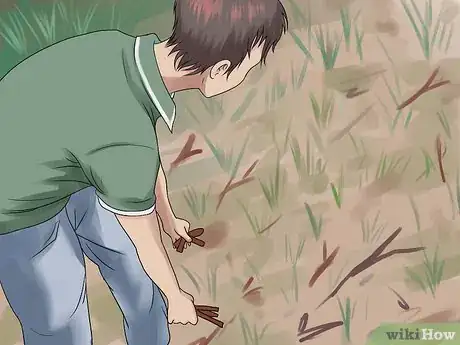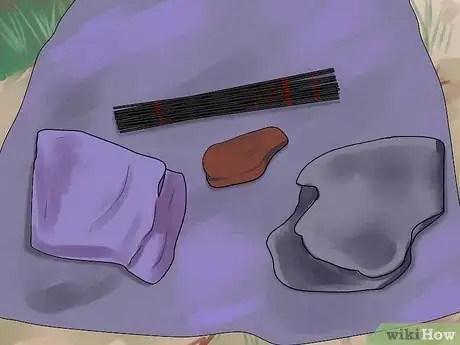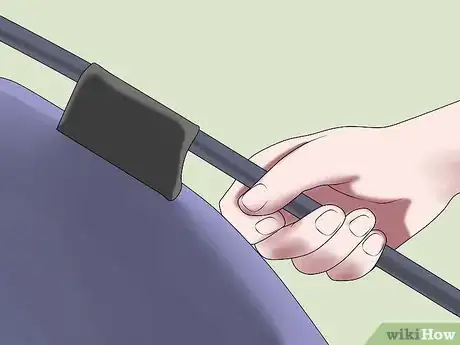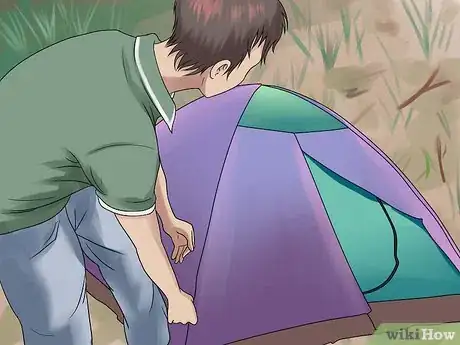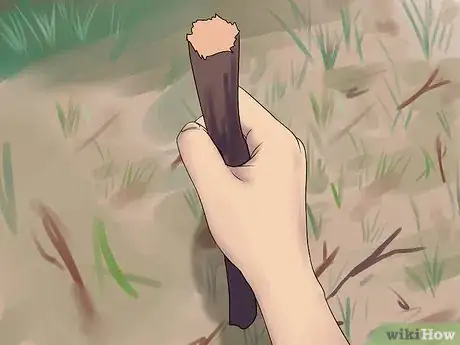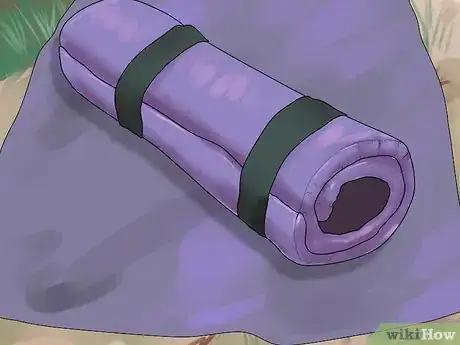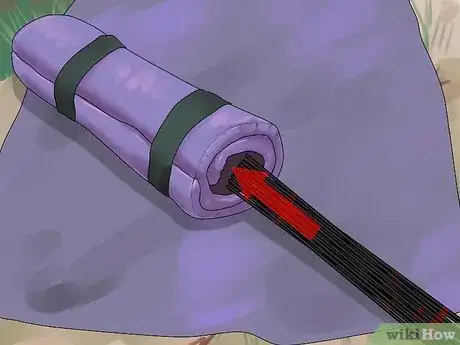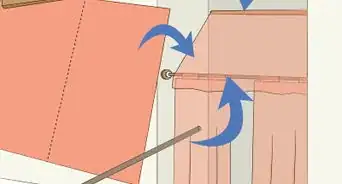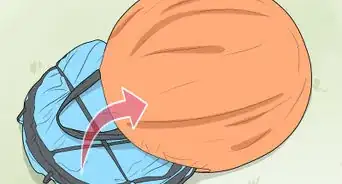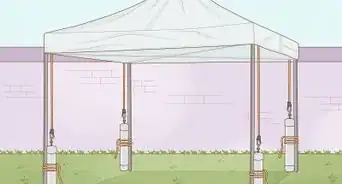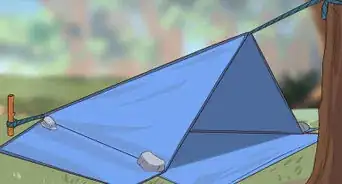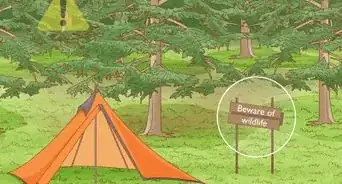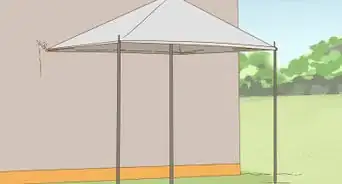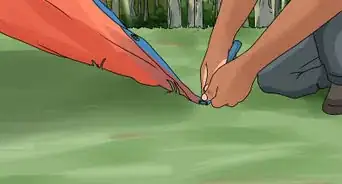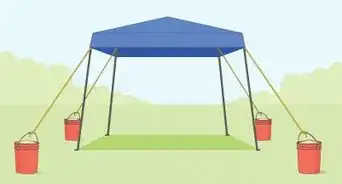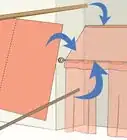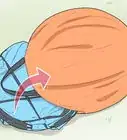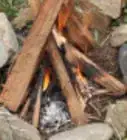This article was co-authored by Josh Goldbach. Josh Goldbach is an Outdoor Education Expert and the Executive Director of Bold Earth Adventures. Bold Earth leads adventure travel camps for teenagers all over the world. With almost 15 years of experience, Josh specializes in outdoor adventure trips for teens both in the United States and internationally. Josh earned his B.A. in Psychology from Eckerd College in St. Petersburg, Florida. He’s also trained as a wilderness first responder, a Leave No Trace master educator, and a Level 5 Swiftwater rescue technician.
This article has been viewed 136,172 times.
It's important to make sure you know how to put your tent together before you end up out in the middle of the woods in the dark. Fortunately, dome tents are easier to put together than ever. Portable, comfortable, and simple, a dome tent is a great way of camping in style. Learn to locate an appropriate camping spot, assemble the tent, and maintain it.
Steps
Finding a Spot
-
1Find an appropriate campsite. Wherever you're camping, in the backyard or the backcountry, you need to look for an appropriate space that will provide you the most comfortable camping experience possible. There are several factors to consider, but the first is to make sure that the area you've selected to camp upon is legal and available for camping.[1]
- If you're in a state or national park, make sure that you've set up in a designated campsite. Often, these will be marked with numbered metal posts and will feature picnic tables, fire pits, and sometimes water spigots for using.
- If you're backcountry camping, make sure that you follow the regulations for the park or nature reserve in which you're camping. Different parks will have regulations about how close you're allowed to camp to water, for example, or how close you can camp next to the trail.
- Wherever you're camping, it's always critical to avoid private property to avoid a rude awakening in the middle of your camping trip from an angry landowner. Never camp anywhere camping is not permitted.
-
2Find a flat spot at your campsite. When you've selected a suitable campsite, it's time to pick where you want to place your tent. There are several factors to consider, and the first should be your comfort. It's hard to sleep on an angle, so it's recommended the thou find a very flat and preferably brushy site to set your tent up on.[2]
- Find higher ground on the site, if possible. If it rains, you don't want to be at a lower point, to which water will run. For this reason, it's a good idea to avoid dry creek beds, little divots, and hollows in the ground. You don't want to wake up in a puddle.
Advertisement -
3Find a break from sun and shade. Ideally, a tent should be placed so that it will remain in shade throughout the following morning, especially if it’s hot out. And even though a dome tent is wind resistant, it’s also a good idea to find as much of a wind break as possible, in case the weather should pick up while you're out hiking or away from the tent. The last thing you'd want is to come back to an empty camp site! Placing a tent to the west of a hillside or a treeline would be the best way of giving yourself the most comfortable night inside and a cool morning to follow.
- Never camp under trees. If it's raining, or threatening rain, it can be tempting to think that setting up under some tree cover would be a safe alternative. Unfortunately, this risks lightning and other hazards. A tent won't stop a falling branch, should something happen. Set up well-clear of such hazards.
-
4Situate your tent away from the fire. Ideally, you’ll want to place your tent upwind from designated fire areas or pits at the campsite. Make sure that any embers or sparks will be clear of your tent to avoid dangerous fire hazards.
- It’s also smart to place your tent upwind from your toilet area, if you’re going to be camping long term.
-
5Clear loose debris from the tent site. When you've selected your ideal location, spend a few minutes clearing any significant rocks, branches, or other debris from the campsite. After you set up your tent, it'll be too late to dig out that rock that's digging straight into your kidney in the middle of the night. Do some work ahead of time and you'll set yourself up for a much more comfortable sleep.[3]
- If you can, look for areas dense with pine needles, if you're in an environment with fir trees. Pine needles can provide an excellent and soft natural mattress, which can help to keep your comfortable.
Setting up the Dome
-
1Lay down the tarp. While most tents don't come with them, it's common to line the campsite with a plastic or vinyl tarp to provide a moisture barrier between the tent and the ground. While not necessary, strictly-speaking, it's recommended to use a camping tarp to keep moisture from leeching into the tent from below. If it rains, you'll be happy you've got this.[4]
- Fold the tarp according to the shape of the tent, but slightly smaller. If there's any risk of rain, you don't want any of the corners sticking out. Don't worry about making it perfect, because you'll be able to tuck them under after you put up the tent.
-
2Lay out all the parts of the tent on the tarp.[5] Remove all the components of the tent and inspect them to make sure everything is included and in good working conditions. You won't be able to set up a tent with some broken or missing tent poles, so it's good to take a minute to make sure everything is there. Each tent will be slightly different, depending on the size, style, and brand of the dome tent, but the basic components of newer dome tents should be mostly universal. You'll find:
- The tent itself, which should be made of vinyl, plastic, and other materials, with a zippered opening and opening flaps where the tent poles will be inserted.
- The rain fly, which might look similar to the size and shape of the tent, but without the zippered openings and flaps for the tent poles. This is used to secure over the tent and offer a barrier from the rain, if necessary.
- Tent poles, which are generally connected with bungee chords or other stretchy material to keep them matched, but might not be with older tent poles, which might need to be screwed together. At the very least, there will be at least two and as many as five or six different poles, which will be made of several foot-long segments. You shouldn't need any tools to fix the tent poles together.[6]
- Stakes should be included to fix the tent to the ground, through small flaps at the base of the tent, and possibly on the rain fly. There should be between four and ten tent stakes. You might also want to include some kind of small hammer to fix them into the ground.
- Bungee ropes may also be included to fix the rain fly to the poles, or to fix the tent to the stakes. Each tent will be somewhat different.
-
3Connect the tent poles. Put together, the tent poles should be six or ten feet long, snapped, fixed, or screwed together. All tent poles will be put together slightly differently, but most modern tent poles are connected with bungee ties that allow you to just snap them together without much effort. Fix them, so they're all put together, and then lay them on the ground flat.[7]
-
4Insert the poles through the tent flaps. Flatten out the tent over the tarp and cross the tent poles over it, where they'll eventually go to make sure you've matched the right pole with the right location. The most basic tents will have to long crossing poles that will form an "X" pattern across the tent, passing through the flaps. When you're sure they're oriented correctly, push the pole through the flaps and leave them flat on the ground. Insert both poles.
- Different tents might have a few different sizes of poles, so you'll have to use your judgment to figure out which goes where, or consult the instructions. This can be the most difficult part of putting a tent together, if you don't have the instructions, but try to hold up the tent to see the basic shape of it, so see where they should go.
-
5Raise the tent. Insert the tips of each pole into the eyelets at the end of each corner of the tent, to raise the tent and make it start taking shape. The poles should bend with some force, helping it to stand. It's usually much easier to do with a helper, standing opposite each other and bending each pole in tandem and helping hold it up.
- When you've got the poles staked, you might want to fluff it gently and pull the poles out slightly to let everything settle. Again, all dome tents will be slightly different.
-
6Stake the tent to the ground. There should be little vinyl hoops or eyelets at each corner and in the center of each side of the tent, which you should use to stake the tent to the ground. Push the stake through and into the ground to secure the tent.
- If you're going to be sleeping in the tent immediately, you may choose to not stake it, especially if you're in an area with lots of coverage and low wind. If you're going hiking though, or the wind is up, it's usually important to stake the tent to the ground so it doesn't blow away.
-
7Connect the rain fly. Fit the rain fly over the top of the tent and attach it to the tent. For some tents, the rain fly will be velcroed to the tent poles in different places, but on others it will be attached with bungee cords down to the stakes, stretching gently.
- Some people choose to not put the rain fly on the tent, if they're sure it won't rain while you're camping. Some rain fly tarps will obscure your ability to see out the windows of the tent, which means you might leave it off it you want. It's usually better to be on the safe side, though, and put it on.
- After you've got the tent up, fold the corners of the tarp up and under the tent to make sure it's out of the way. Leaving any of it hanging out will promote water pooling underneath, if rains, so you want to make sure none of the tarp is showing.
Packing Your Tent
-
1Let the tent dry. After camping, let the tent dry thoroughly in the sun before you pack it up and away, if you can, so avoid mildew building up inside the tent. Remove the rain fly, the stakes, and everything from the inside of the tent and fluff it out gently to let it air out.
-
2Roll up the tent and rain fly. Never fold a tent, as you would a shirt or a flag. To avoid folding creases into the tent, you want to stuff or roll them into the stuff sack included with the tent. This will help keep the tent solid and waterproof, making it an essential maintenance step in the life of the tent. Stuff in the tent and the rainfly into the stuff sack before you put anything else in.
-
3Slide in the poles and stakes. After you stuff in the tent and the rain fly, slide the poles and the stakes in to the side of the other materials, being careful not to catch the metal on the side of the tent and tear it. Sometimes the stakes and the poles will have separate bags to help you keep them together.
-
4Air the tent out, if necessary. Periodically, pull your tent out of the bag and let the air get to it, especially if it gets wet at some point during use. If you don't camp much, it's important to let the tent air out so you won't be confronted with a mouldering tent a year from now. Let it air out in the sun if necessary.
Community Q&A
-
QuestionCan a three person dome tent be set up in a house to play in?
 Community AnswerIf the house has a very large room, perhaps a way can be found to pitch the tent indoors.
Community AnswerIf the house has a very large room, perhaps a way can be found to pitch the tent indoors. -
QuestionDo you I have to stake my tent to the ground?
 Community AnswerStaking helps keep tension in the tent fabric, which in turn helps keep you dry if it rains. Stakes also help keep the tent from moving. If you don't have stakes, look for some fist-sized rocks to anchor the corners of the tent inside.
Community AnswerStaking helps keep tension in the tent fabric, which in turn helps keep you dry if it rains. Stakes also help keep the tent from moving. If you don't have stakes, look for some fist-sized rocks to anchor the corners of the tent inside. -
QuestionCan I pack my tent leaving the inner tent attached?
 Community AnswerIt all depends on what type/brand you have. With most tents you can do that, though.
Community AnswerIt all depends on what type/brand you have. With most tents you can do that, though.
Warnings
- Take care that you do not scratch the fabric of the tent on anything sharp as it will tear.⧼thumbs_response⧽
- Do not step on the poles as they will break.⧼thumbs_response⧽
Things You'll Need
- Dome tent fabric
- Foldable rods
- Tarpaulin or a thick cloth
Expert Interview

Thanks for reading our article! If you’d like to learn more about setting up a tent, check out our in-depth interview with Josh Goldbach.
References
- ↑ https://gudgear.com/how-to-put-up-a-dome-tent-by-yourself/
- ↑ https://gudgear.com/how-to-put-up-a-dome-tent-by-yourself/
- ↑ https://gudgear.com/how-to-put-up-a-dome-tent-by-yourself/
- ↑ http://www.overstock.com/guides/how-to-set-up-a-tent
- ↑ https://gudgear.com/how-to-put-up-a-dome-tent-by-yourself/
- ↑ http://www.trails.com/how_6112_put-up-dome-tent.html
- ↑ https://www.youtube.com/watch?v=vfmsGgMHuTM



